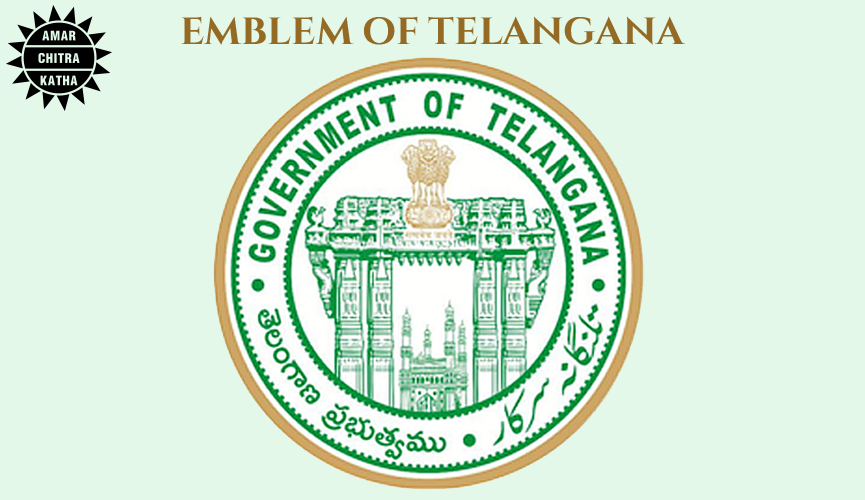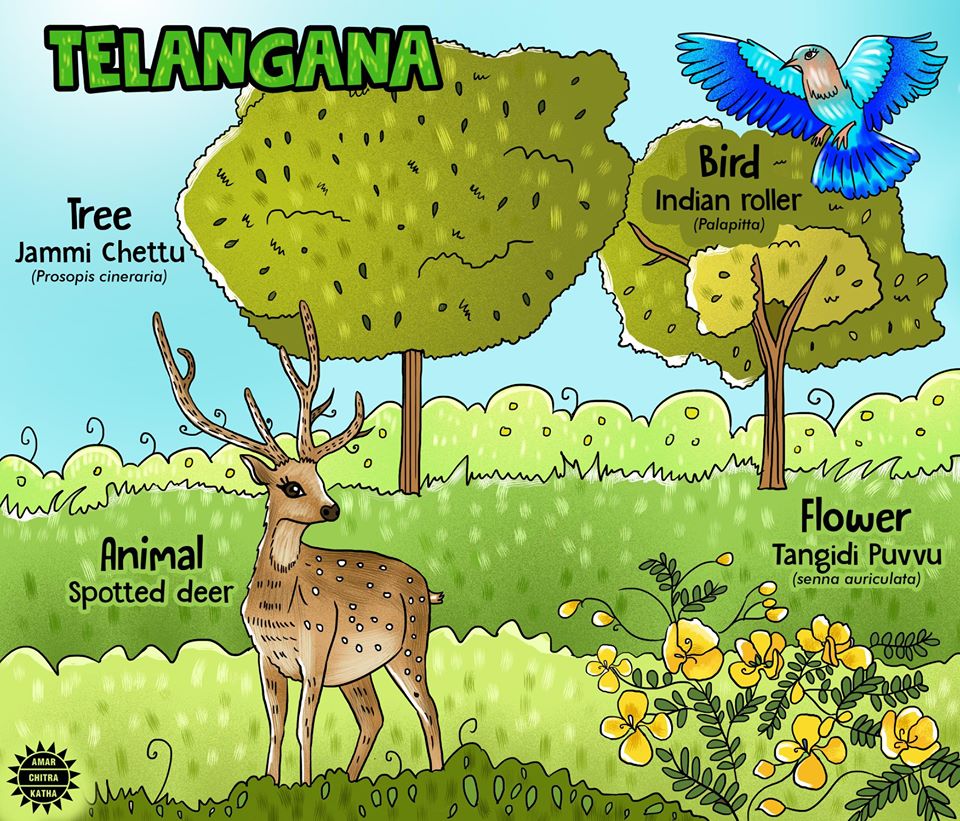The Story Of Telangana
- April 29, 2021


The Story Of Telangana
- April 29, 2021
By Srinidhi Murthy
The state of Telangana is situated in the south-central area of the country, on the Deccan plateau. The land is blessed by two major rivers, the Krishna and the Godavari. It has witnessed the passing of many powerful kings and dynasties.
The name Telangana comes from the word ‘Trilinga Desa’ which means the land of the three lingas. Three ancient Shiva Temples at Srisailam, Draksharam, and Kaleshwarama are found in the state. Other scholars say that the etymology of this word lies in the Telugu word ‘Telugu Angana’ meaning a place where Telugu is spoken; to differentiate it from the areas where Marathi was spoken during the reign of Nizams.
To receive more such stories in your Inbox & WhatsApp, Please share your Email and Mobile number.

Telangana has been governed by various dynasties such as the Chalukyas, the Kakatiyas, the Mughals and the Qutub Shahis among others. The Satavahanas ruled over a large area of the peninsula including Telangana around 1000 BCE to 300 BCE. Art and literature flourished during this period.
Next, the Kakatiya dynasty ruled over the present-day Andhra Pradesh and Telangana region for 240 years. Tremendous economic and cultural progress happened under their rule. A notable mention is Rudramadevi, a woman way ahead of her times and a well-loved monarch. The last ruler of this dynasty was Prataparudra II, who was defeated by the forces of Muhammad bin Tughluq. The dynasty collapsed in the year 1323.
The region came under the rule of the Delhi Sultanate after the victory of Quli Qutub Mulk. He established the Qutub Shahi dynasty in 1518. During his reign, the present Golkonda Fort was built. In 1687, the Golconda Sultanate ended when the Mughal emperor Aurangzeb took siege of the Golconda fort.

Towards the end of the eighteenth century, the Asif Jahi Nizams ruled over the region. They aided the East India Company in their war against Tipu Sultan. Nasir-ud-dawlah, Asaf Jah IV was compelled to sign a subsidiary alliance with the British in 1799. He had to give up the Rayalaseema regions and coastal Andhra to the British and lost control over the state’s defence and its external affairs.
After the independence of India, the Nizam of Hyderabad wanted a separate and independent status for Hyderabad, but the Indian Government refused to entertain such a request. Operation Polo was initiated to merge the state of Hyderabad with the Indian Union. After successful completion of the operation, the Kannada speaking areas were merged with Karnataka, those speaking Marathi joined Maharashtra and the Telugu speaking regions were merged with Andhra Pradesh. In 1956, Hyderabad city was announced as the capital of united Andhra Pradesh.
In the early 1950s, the demand for separate statehood for Telangana was initiated and slowly gained momentum. Finally, on June 2, 2014, Telangana became the 29th state of India. This youngest state of the country has a glorious legacy of art, culture, literature and economics.
To receive more such stories in your Inbox & WhatsApp, Please share your Email and Mobile number.

Comic of The Month
The Naval Journey of India Book I
This book is the first of a three-book series that takes a deep and detailed look at India's Naval History and a deep insight into the lives of our men and women in white. But any series on the Indian Navy has to start at the very beginning - exploring India's celebrated maritime history. Join our little hero, Bharat, and his grandfather, Commodore Sagar, as they sail into the deep blue waters of time. Book I of The Naval Journey of India takes a sweeping look at India's maritime endeavours, how the seas impacted us over millennia and how the oceans made us who we are.